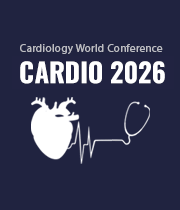Title : Guideline directed management of acute coronary syndrome in 2025
Abstract:
Acute Coronary Syndrome (ACS) remains as a major contributor to cardiovascular mortality worldwide. It encompasses Unstable Angina (UA), Non-St Elevation Myocardial Infarction (NSTEMI) and lastly ST Elevation Myocardial Infarction (STEMI). Recent clinical guidelines evolve which effects the way future management and treatment modalities are carried out. With the latest European Cardiology Society (ESC) guidelines, this reflects the latest research trials and data which ultimately provides us clinicians an evidenced based approach to ACS care for patients and the introduction of risk stratification scoring systems as well as various types of strategy selections (invasive vs non-invasive).
The clinical importance of including comparisons of high-sensitive troponin assays and refined criteria involving risk stratification scores has demarcated treatment algorithms for various scenarios. Having early rule-in / rule-out pathways now allow better clinical decision making for healthcare professionals. The guidelines involve a more personalised approach for patients including antiplatelet therapy, bleeding risk, timing-related strategies as well as secondary prevention methods in a public health view. Furthermore, this has provided clearer distinction between high, medium and low-risk patients which defers in treatment strategies.
Subsequently, this includes the clinical presentations and differentiating typical vs atypical chest pain alongside investigation modalities. Special considerations for conditions complicating ACS (e.g. Myocardial Infarction with Non-obstructive Coronary Arteries, Multi-Vessel Disease) and its methods of further investigations differs from one another which ultimately differs in treatment plans. Cardiovascular imaging including coronary angiograms and cardiac MRIs continues to serve deep purpose in this case.
Moreover, it is essential to note the equal importance of the public health sector in secondary prevention. Having guidelines which also includes continuity of care and long-term cardiovascular risk reduction is crucial in overall reduction in the prevalence of cardiovascular disease leading to ACS. This presentation highlights these key changes which allows healthcare professionals involved in patient interaction to have better clinical acumen. Overall, this is also aimed to reduce the burden on recurrent cardiovascular events. These updated guidelines continually prove to be critical for health systems to also run effectively for all populations alike.



